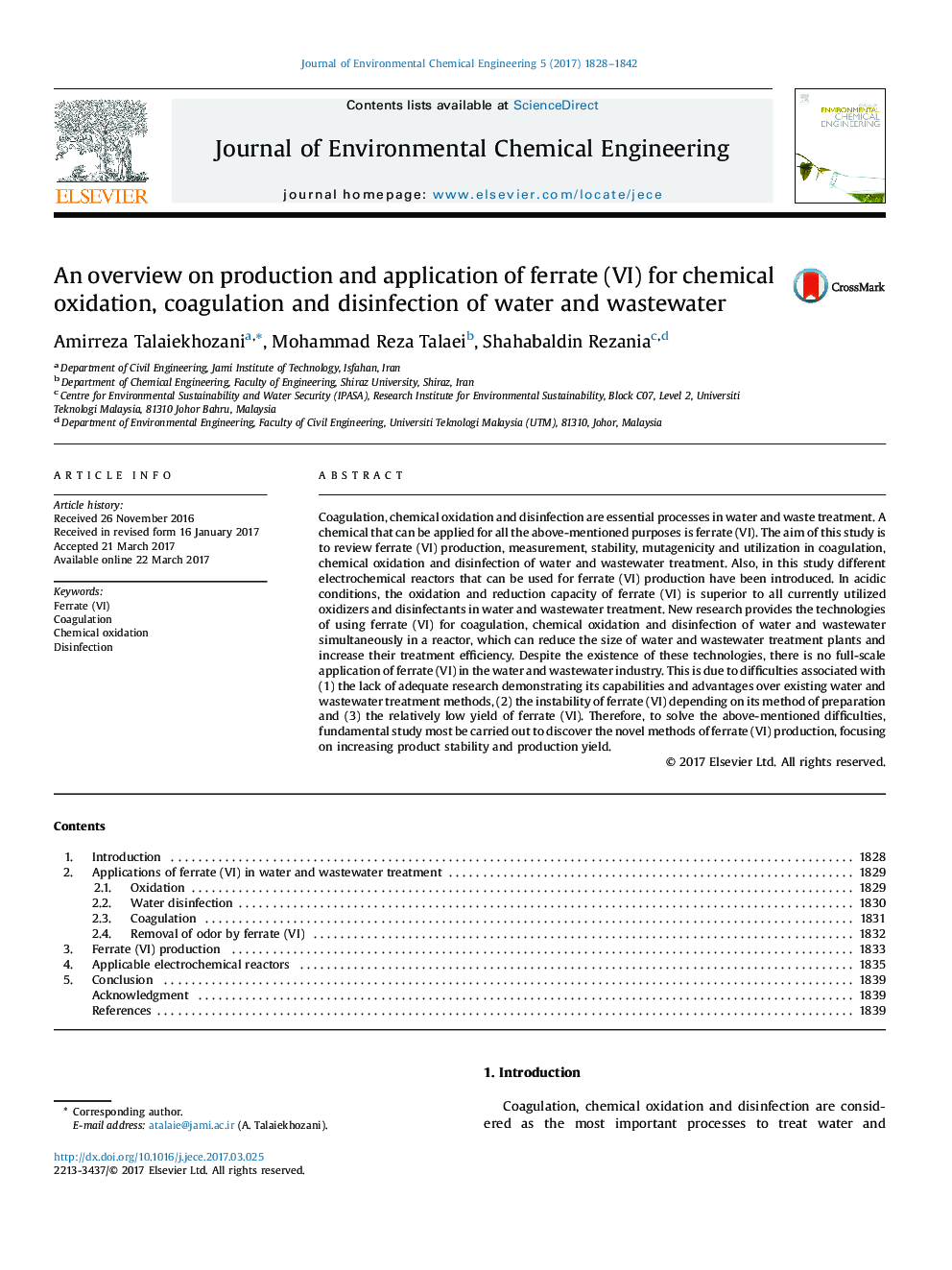| Article ID | Journal | Published Year | Pages | File Type |
|---|---|---|---|---|
| 4908468 | Journal of Environmental Chemical Engineering | 2017 | 15 Pages |
Abstract
Coagulation, chemical oxidation and disinfection are essential processes in water and waste treatment. A chemical that can be applied for all the above-mentioned purposes is ferrate (VI). The aim of this study is to review ferrate (VI) production, measurement, stability, mutagenicity and utilization in coagulation, chemical oxidation and disinfection of water and wastewater treatment. Also, in this study different electrochemical reactors that can be used for ferrate (VI) production have been introduced. In acidic conditions, the oxidation and reduction capacity of ferrate (VI) is superior to all currently utilized oxidizers and disinfectants in water and wastewater treatment. New research provides the technologies of using ferrate (VI) for coagulation, chemical oxidation and disinfection of water and wastewater simultaneously in a reactor, which can reduce the size of water and wastewater treatment plants and increase their treatment efficiency. Despite the existence of these technologies, there is no full-scale application of ferrate (VI) in the water and wastewater industry. This is due to difficulties associated with (1) the lack of adequate research demonstrating its capabilities and advantages over existing water and wastewater treatment methods, (2) the instability of ferrate (VI) depending on its method of preparation and (3) the relatively low yield of ferrate (VI). Therefore, to solve the above-mentioned difficulties, fundamental study most be carried out to discover the novel methods of ferrate (VI) production, focusing on increasing product stability and production yield.
Related Topics
Physical Sciences and Engineering
Chemical Engineering
Chemical Engineering (General)
Authors
Amirreza Talaiekhozani, Mohammad Reza Talaei, Shahabaldin Rezania,
